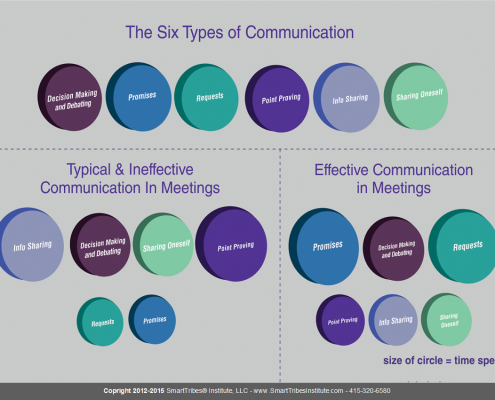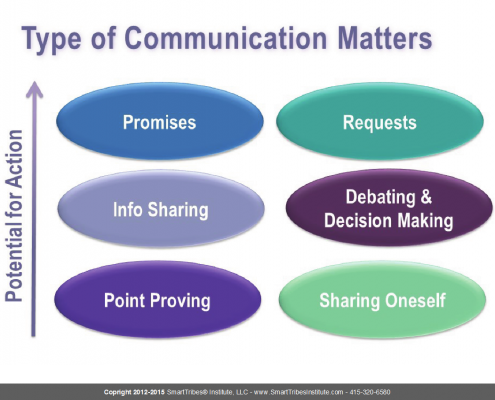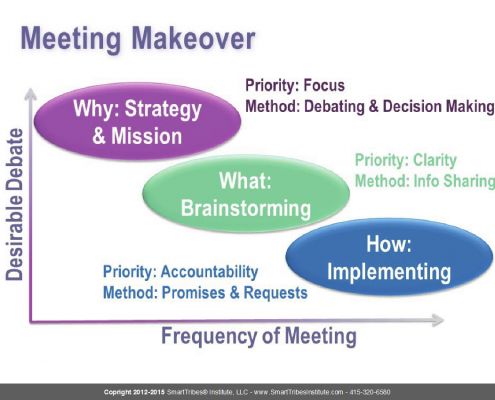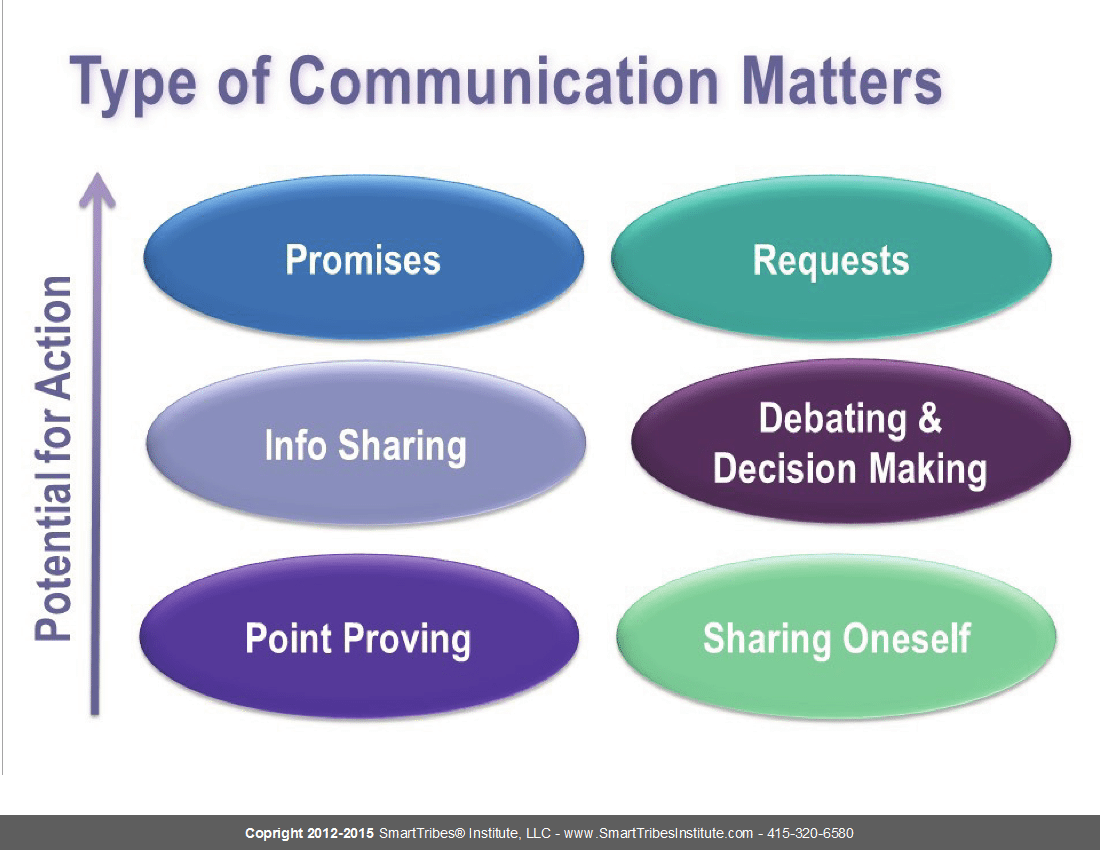
*As originally seen on Forbes.com
How is your company’s communication?
Is it clear and efficient and aimed at driving results or increasing connection?
Or do team members talk a lot without saying anything that moves the needle?
Maybe you remember this model from my previous blog: 4 Steps To Fast, Effective Meetings where we addressed the types of communication that created efficient and effective meetings that keep your team happy and executing with high accountability.
It’s been a few years since I wrote that post and in that time, we’ve added to the types of communication.
Requests and Promises
Today we are going to extend this model because some things that weren’t useful in tactical meetings are incredibly useful in strategic meetings. Most tactical meetings have too much of these two behaviors, personal sharing and point proving…for tactical meetings we must work on increasing the amount of requests and promises.

Depending on the type of meeting, you want more or less action to result. Here’s another way to notice what the result of the meeting will be depending on the type of communication that happens in it.

Notice that promises and requests are at the top because that’s going to lead to the most action. Info-sharing and debating and decision making are in the middle, while point proving and sharing oneself is at the bottom because it doesn’t usually lead to positive action.
There are three types of meetings you’ll want to consider.
- Why Meetings: Strategy & Mission: The priority is focus and the method is debating and decision making
- What Meetings: Brainstorming: The priority is clarity and the method is info sharing
- How Meetings: Implementing: The priority is accountability and the method is promises and requests

Let’s take a deep dive into the graphic above:
Notice the two axes on this chart. The vertical or y-axis here is about increasing the level of debate (or healthy conflict). As you get closer to zero, team members have more sameness in their thinking and as you go up there is less sameness and more divergent thinking.
The horizontal or x-axis here refers to the frequency or rhythm of your meetings. Closer to 0 is fewer meetings—but perhaps longer—and as you move right you are meeting more and more frequently—but usually for shorter duration (like huddles).
At the left end of the spectrum…fewer meetings per year with more debate…we have more strategic meetings. This is where we actually want to have high debate and include divergence…we are getting ourselves aligned. This is a place for healthy conflict. We are asking “Why are we doing this?” to determine mission, vision, values and to get aligned. Here we can tolerate and encourage a lot more debating (though never point proving), we are not as focused on resulting action. We are focused on getting out on the table different new ideas, information, and understanding what could go wrong on different paths.
In the middle we have your average departmental or executive team meeting…slightly less frequent, slightly less debating as you are no longer re-determining the core of your strategy…you are brainstorming about what to do and creating action plans. Remember the Clarity level and Lessons from South Park in my previous blog What ‘South Park’ Can Teach You About Business—Hint: Stealing Underpants Isn’t Enough. Here we tolerate more Info Sharing as we need to know what the parts of the team are doing in order to plan and prioritize.
Toward the right we have your daily and weekly implementation meetings as well as 1-1 interactions. These meetings are all about promises and requests.
The result? Meetings that are efficient, effective, and keep your team happy and executing with high accountability—and in their Smart State. Further, it’ll reduce frustration, boredom and disengaged team members.
Do what my clients do: enlarge the graphics above, post it on your conference room wall and train your team to communicate to drive results.
Then everyone will communicate effectively, efficiently, and focus on moving the needle.






